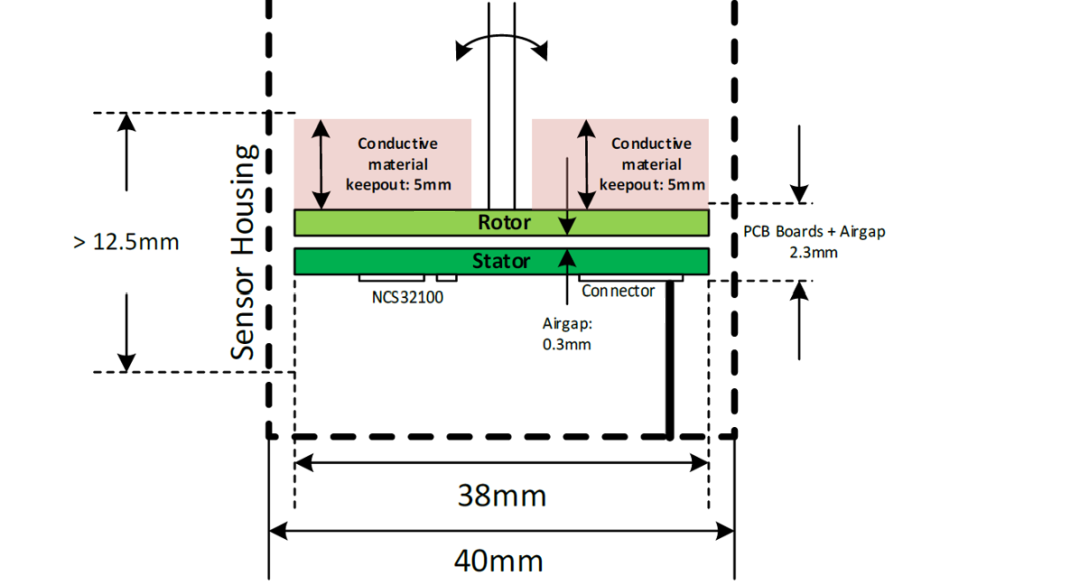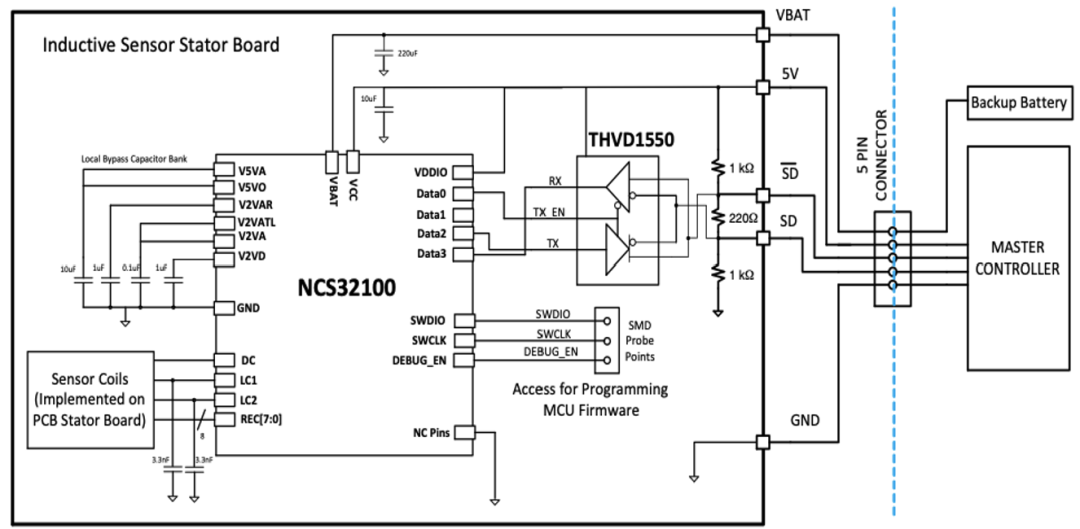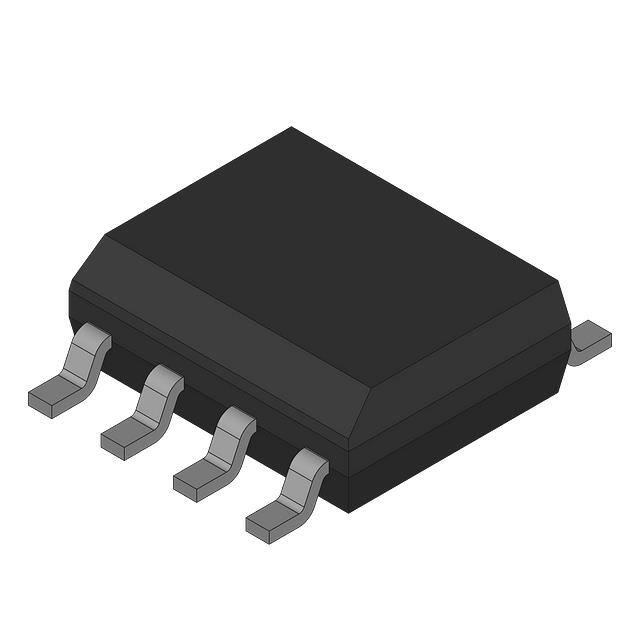In the robot market, why is it recommended to choose inductive sensors?
The increased capabilities of robots and collaborative robots (cobots) mean they can take on more jobs on the factory floor, handle more complex tasks, and operate faster than before while working more closely with humans.
These changes mean that in industrial applications, sensors need to be extremely accurate to ensure safety and reliability during long periods of operation.

In terms of motion perception, such as tracking the position and movement speed of a robotic arm, there are already many solutions based on optical or magnetic sensing. However, these existing detection technologies struggle to combine high accuracy with resistance to contamination. Instead, inductive sensing technology is emerging as a superior solution, providing reliable and robust position awareness with precision and adaptability for a variety of industrial applications. In this article, we explore the growing use of inductive sensors, driven by the need for superior performance and durability, and discuss how to simplify their integration in automation systems.
Limitations of different sensor technologies
In any automation application where motors are used, such as robotics, automotive and industry, we need to ensure precise control of the motors. To do this, we need to know the position and speed of the motor's rotor, which is usually attached to a shaft and moves relative to a fixed stator. There are three types of rotary encoders most commonly used technologies: photoelectric, magnetic, and inductive. They each have advantages and disadvantages:
First, photoelectric encoders are highly accurate and insensitive to the magnetic fields found in many industrial applications. However, they are relatively expensive and are susceptible to contamination from dirt such as the optical code disc, light source, photodetector or bearing wear.
Another option is a magnetic encoder, which is a low-cost solution. They are typically used in high-volume applications where cost needs to be reduced and high accuracy is not required. Although they are not sensitive to dirt, they can be negatively affected by magnetic fields.
Inductive encoders offer a solution to overcome these major disadvantages: they achieve higher position accuracy than magnetic encoders while being cheaper than optical encoders. Since inductive encoders can withstand high contamination, vibration and external magnetic fields, they are ideally suited for harsh environments such as industrial applications.
In addition, inductive encoders are insensitive to temperature changes and have low component count, reducing size, cost and complexity. Another advantage of inductive encoders from an environmental perspective is that they do not rely on the rare earth materials used in some magnets.
NCS32100 Dual Inductive Position Sensor
Let's look at an example of an inductive sensor: ON Semiconductor's NCS32100 position sensor embodies recent advances in inductive sensing, offering ruggedness, non-contact operation and resistance to environmental factors. The NCS32100 includes a full-featured controller and sensor interface that enables high-resolution, high-precision angle detection when paired with a suitable non-contact PCB sensor. It offers flexible configuration capabilities to interface with a variety of inductive sensor samples and offers a variety of digital output formats.
Figure 1 shows a cross-section of a complete rotating inductor system. These include a rotor and a stator, both of which are printed circuit boards (PCBs), with the rotor mounted on a central axis. The figure also shows the NCS32100 mounted on the static stator PCB, along with the power and data connectors. The two PCB boards are parallel to each other, usually with an air gap of 0.1 mm to 1 mm in between.

The NCS32100 is an absolute encoder, which means it can deduce position without rotating the disc, which is particularly helpful for obtaining position at startup or when the system changes during shutdown. Its position accuracy is better than ±50 arcsec, or 0.0138 degrees of mechanical rotation, a level of accuracy previously achieved only with optical encoders. This accuracy is achieved at speeds up to 6,000 revolutions per minute (RPM), and the NCS32100 can operate at speeds up to 45,000 RPM – with slightly reduced accuracy.
To make integration of the NCS32100 as easy as possible, ON Semiconductor provides a variety of tools and support, as well as web-based design tools for PCB design. This includes the reference design for the NCS32100, shown in Figure 2 (the portion to the left of the blue dashed line is contained on the stator PCB board).

In a position sensing system, two sets of conductive traces or coils (thin and thick) are printed on the surface of both discs (stator and rotor). A third set of conductive traces called the field coils are printed on the stator PCB (Figure 3).

The NCS32100 emits a 4 MHz sine wave into the excitation coil, creating an electromagnetic field around it. According to Faraday's law of electromagnetic induction, the thin and thick coils of the rotor intersect with the electromagnetic field, coupling energy to the rotor coil in the form of eddy currents. These eddy currents on the rotor couple to produce voltages (up to 100 mV) in thin and thick coils on the stator, which are also connected to the eight receiver inputs of the NCS32100.
The NCS32100 measures rotor position by demodulating eight receiver inputs, which are then converted to digital signals and processed. This information is fed into the Arm® Cortex® M0+ microcontroller (MCU), making the solution highly configurable. The MCU provides absolute position and velocity data, which is sent via the RS-485 interface on the evaluation board.
When the rotor rotates between 100 and 1000 rpm, the sensor self-calibrates in just two seconds with just one command. Calibrated coefficients are stored in embedded flash memory. Despite its superior performance, the dual-inductor approach is very simple to implement in a system. In contrast, optoelectronic encoding solutions require many components, including an optical code disk, stator PCB, and LED driver, totaling up to 100 components. In comparison, an NCS32100-based solution requires only a pair of PCB boards and less than half the number of components. This inductive solution provides the same accuracy as the optoelectronic solution.
Inductive Position Sensors in Automotive Applications
In this article, we’ve discussed the role of inductive encoders in industrial applications, but they also have their place in the automotive world.
In the automotive industry, the most important issue is safety, which is especially important for critical applications such as braking or steering. ON Semiconductor's NCV77320 automotive-grade absolute position sensor is designed in accordance with ISO26262 standards and is specifically used in these key application scenarios, such as brake pedal sensors, accelerator pedal sensors, throttle position sensors, etc.
The NCV77320 has three receiver inputs and a typical full-scale accuracy of ±0.15%, allowing the flexibility to be used as a rotary or linear encoder.
Like the NCS32100, the NCV77320 is insensitive to interference from contamination, temperature changes, and stray magnetic fields. It is suitable for use in harsh automotive environments with an operating ambient temperature range of -40°C to +150°C.
Conclusion
The factory floor is a noisy environment filled with potential contaminants, making it a demanding workplace for electronic components that must deliver precision and reliability. Inductive position encoders like the NCS32100 are meeting this challenge
As industries continue to prioritize efficiency and accuracy, they increasingly rely on automation. This means that position and motion sensing technology is becoming more widely available, providing the required accuracy and stability. Accurate sensor data helps industrial companies reduce failures, extend maintenance intervals, maximize production, and minimize maintenance costs.


